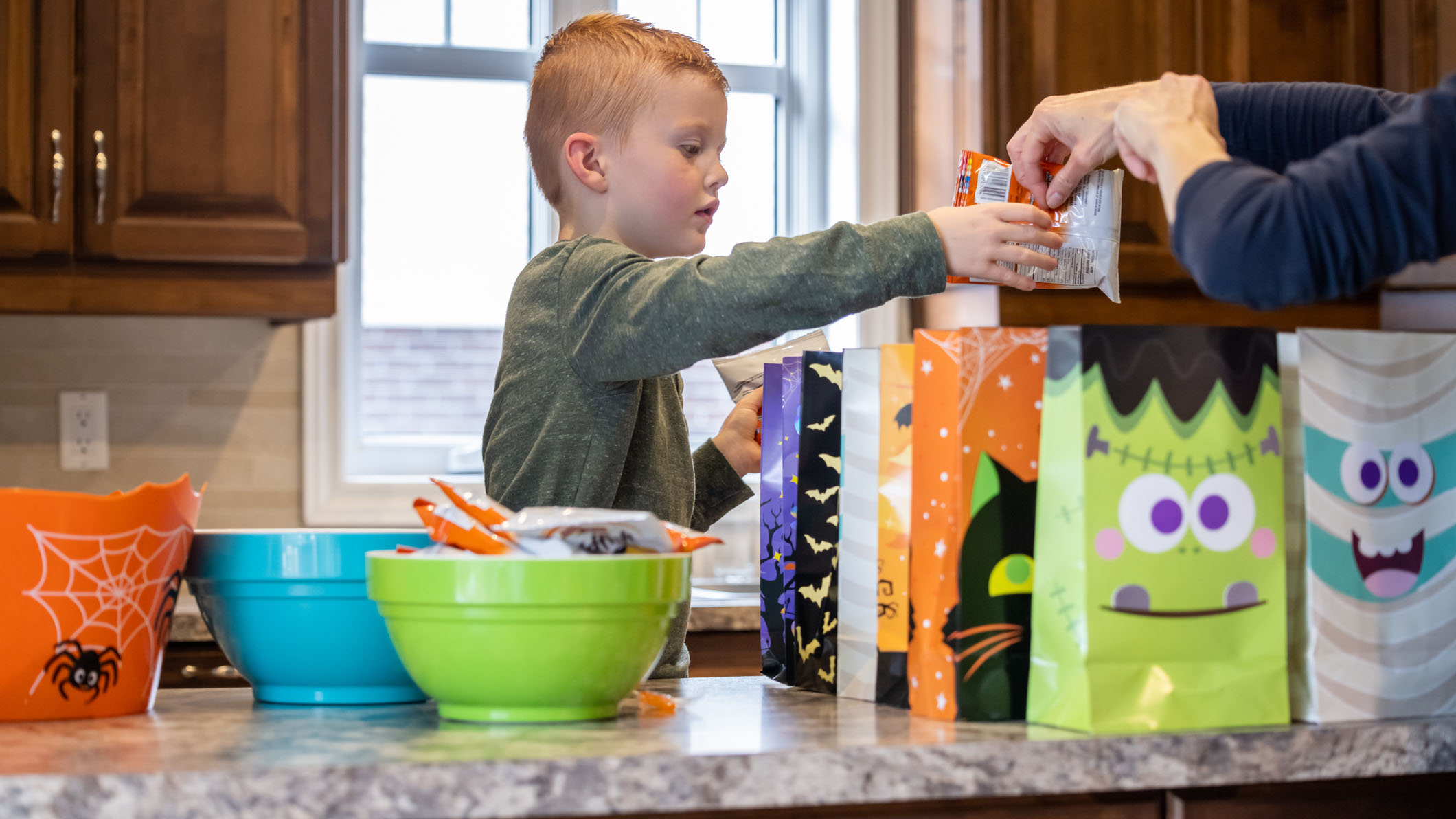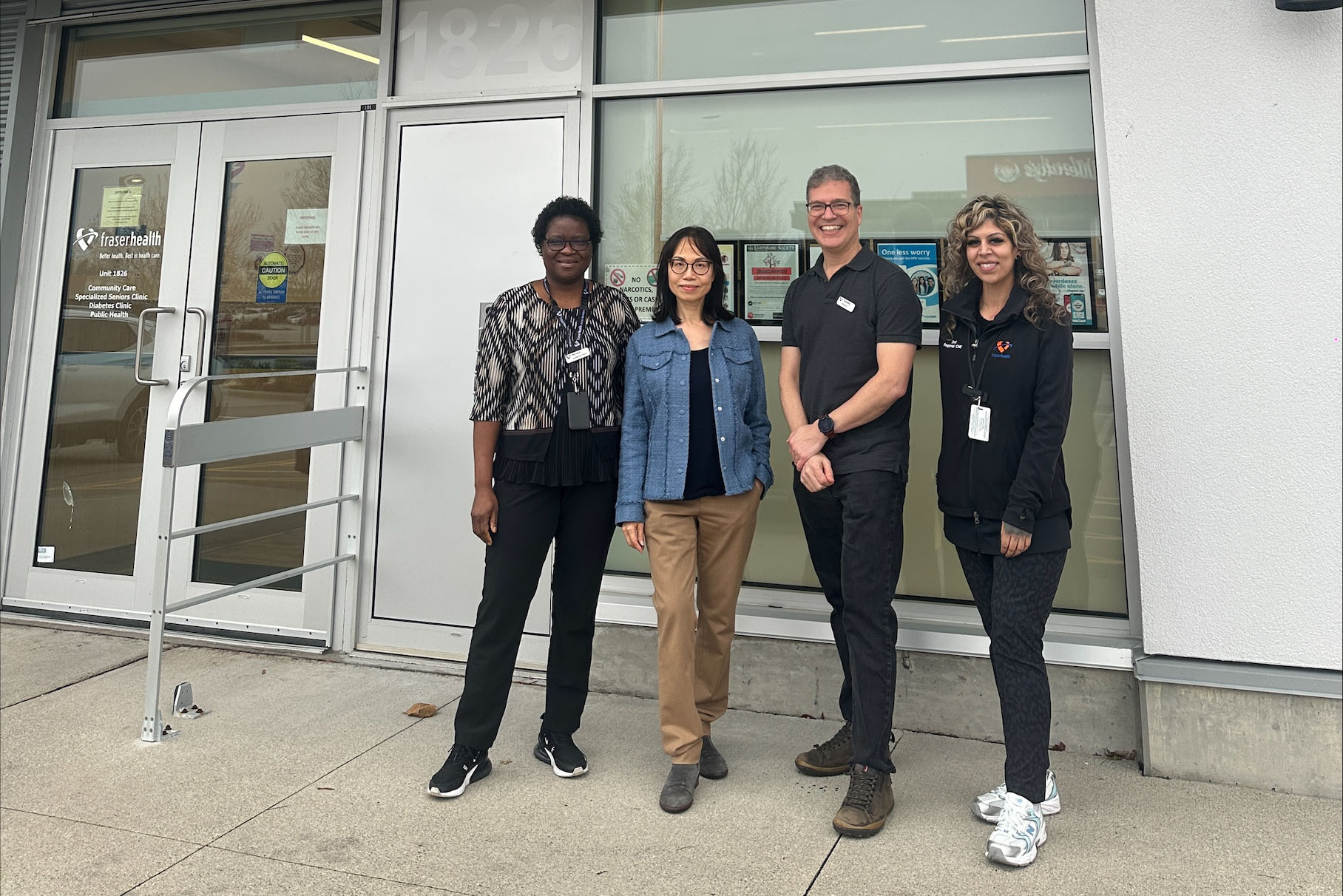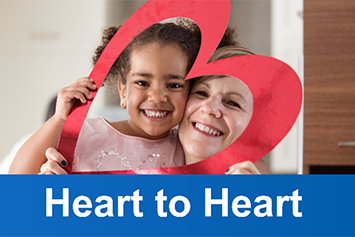
No one wants to take the ‘treat’ out of trick-or-treating, but Halloween treats can increase the risk of cavities. This year, Fraser Health is encouraging families to plan ahead to help scare away tooth decay.
When we eat sugary or carbohydrate-rich foods and drinks, the germs in dental plaque mix with the sugars to make a mild acid. This acid attacks tooth enamel, the hard outer layer of the teeth. If plaque is not removed regularly, the enamel softens and cavities can form.
To keep teeth healthy and enamel strong, brush twice a day with toothpaste containing fluoride.
“The damage to teeth depends on how long sugar stays in the mouth,” explains Karen Hopkins, dental hygiene practitioner and leader for Oral Health, Population and Public Health, Fraser Health. “The longer and more often sugar touches the teeth, the greater the damage. Careful timing of treats and good oral hygiene habits can help.”
Here are some simple steps to protect your child’s teeth this Halloween:
- Let the kids enjoy the day: Before heading out, talk with your kids about how much trick-or-treating is enough. When they return home from the candy haul, let them lay out their candies, look over them, sort them out, and eat what they enjoy.
- Minimize sugar exposure: Certain treats are less tooth-friendly, such as lollipops and hard candies that stay in the mouth for a long time, or sour and chewy candies that stick to teeth. Use your discretion to decide how much and how often you want to offer these to your child. Other candy varieties to consider offering include sugar-free gum, chocolate, and powdery candies that dissolve quickly, as they are less harmful to teeth.
- Keep brushing: Help your child brush about 30 minutes after eating candy, since tooth enamel is softened right after eating sweets and can be damaged by brushing too soon. Make sure they do not go to bed without brushing, since cavity-causing germs are most active at night.
“As parents or caregivers, you decide what, when, and where food is offered,” says Fraser Health Medical Health Officer, Dr. Lindsay Bowthorpe. “By not treating Halloween candy as a special food, you can help children build healthy relationships with food.”
Treats can be enjoyed with meals or as part of a snack. If treats are eaten between meals, encourage children to drink plenty of water afterward to help rinse away sugar and acids. Eating a piece of hard cheese or chewing sugar-free gum after a sweet treat can also help protect teeth.
“Halloween is more than candy,” says Karen. “You can make it exciting by spending time together, joining community events, and using creative non-food treats such as small toys, stickers, temporary tattoos, or glow sticks.”
Here are some tips to ensure everyone has a safe and enjoyable evening:
- Stay alert: Limit your driving on Halloween night if possible. If you plan to attend gatherings, walk or carpool if available. If you need to drive, go slow, stay alert, and watch for children who may be in the street.
- Follow pedestrian rules: When walking, always cross the street at intersections. Look both ways before crossing.
- Be visible: Make sure children are wearing visible costumes and have flashlights or glow sticks. Add reflective tape to costumes to help drivers see them. Encourage children to stay in groups in well-lit areas.
- Do not drink and drive: To get home safely, arrange for a ride with a designated driver, take transit, use a rideshare app, or call a taxi.
Celebrating safely includes ending the night on a positive note. Let’s all do our part to keep Halloween fun, healthy and safe for everyone.
About Fraser Health:
We recognize that Fraser Health provides care on the traditional, ancestral and unceded lands of the Coast Salish and Nlaka’pamux Nations and is home to 32 First Nations within the Fraser Salish region.
Fraser Health is dedicated to serving all Indigenous people, and honours the unique cultures of the First Nations, Métis and Inuit living within the Fraser Salish region.
Our hospital and community-based services are delivered by a team of 50,000+ staff, medical staff and volunteers dedicated to serving our patients, families and communities.


